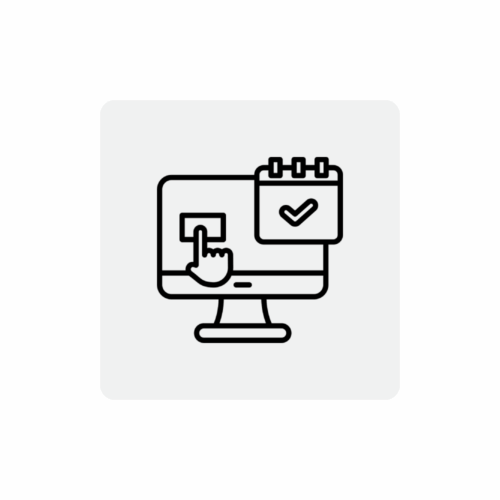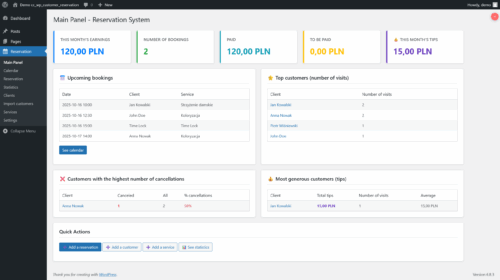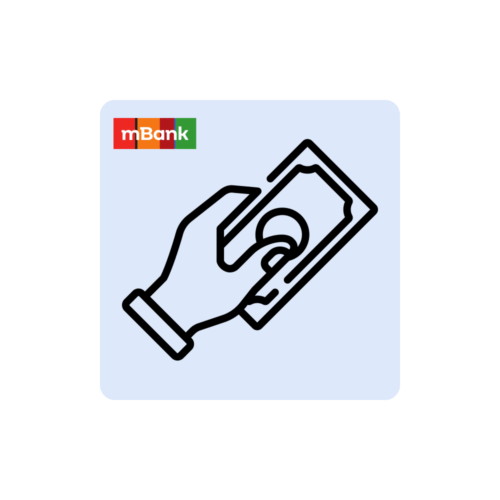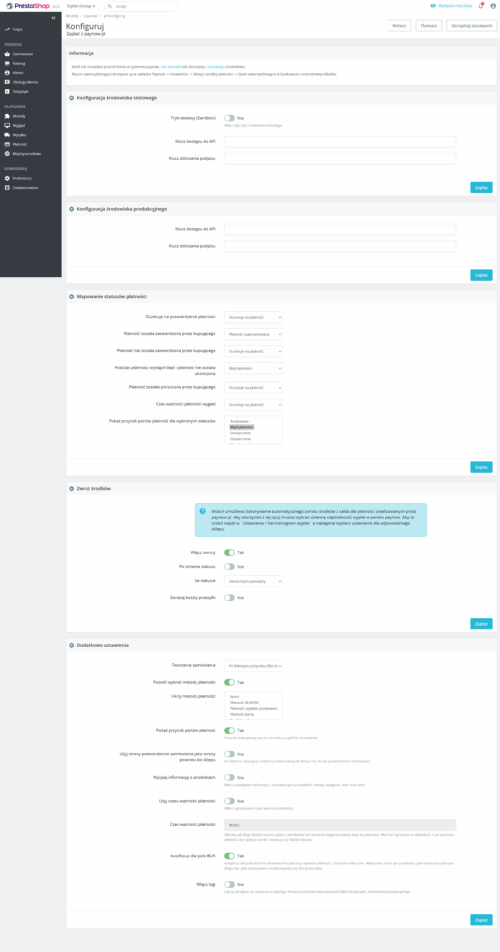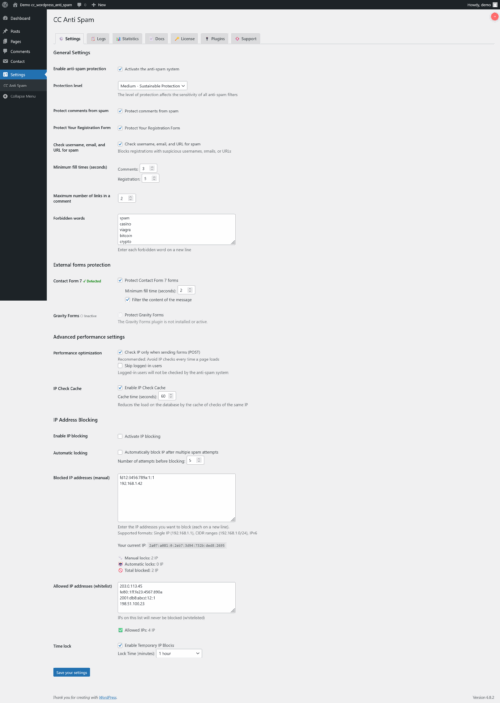Documentation of the CC WordPress Portfolio module
Comprehensive documentation for the Portfolio plugin for WordPress (cc-wordpress-portfolio) with rich configuration and project management options.Table of contents
- Introduction
- Installation
- License activation
- Management panel
- Adding portfolio projects
- Configuration of attributes
- Photo gallery management
- Categories and tags
- Templates and display
- Permalinks and URLs
- Social media integrations
- Import and export
- Advanced settings
- Features for developers
- Troubleshooting
- FAQ
1. introduction
CC WordPress Portfolio is an advanced plugin for creating and managing portfolios on WordPress-based sites. The plugin offers an intuitive interface that allows you to create attractive presentations of your projects using ready-made templates, without any knowledge of HTML and CSS.The plug-in offers:
- Custom Post Type for portfolio projects
- Advanced attribute system for each project
- Photo galleries with lightbox function
- Categories and tags for projects
- Abbreviated project names
- Social media share buttons
- Import and export projects and settings
- Customizable display templates
- Custom permalinks for projects
2 Installation
System requirements- WordPress 5.0 or later
- PHP 7.2 or later
- Permission to install plug-ins
- Download the ZIP file of the plug-in from the official store cocos.codes
- Log in to your WordPress admin panel
- Go to: Plugins > Add New > Upload Plugin
- Click "Choose file" and select the downloaded ZIP file.
- Click "Install Now"
- When the installation is complete, click "Enable plug-in"
Info
After installation, the plug-in will automatically create the necessary tables in the database. You will need to configure the plug-in and activate the license before you can fully use all the features.
3. license activation
It is necessary to activate the license before using the full functionality of the plug-in:- After installation, go to Portfolio menu > Settings
- Select the "License" tab
- Enter the license key you received after purchase
- Click "Activate License"
- After successful activation, you will see a confirmation message and all features of the plugin will be unlocked
Warning
Without an active license, the plugin will work in limited mode, without all advanced features. A message about the inactive license will be displayed at the top of the admin panel.
4. management panel
The management panel of the CC WordPress Portfolio plugin consists of several sections accessible from the WordPress menu: Main sections:
- Portfolio - list of all projects
- Add new - adding a new portfolio project
- Categories - project category management
- Tags - project tag management
- Attributes - managing custom project attributes
- Settings - plug-in configuration with several tabs:
- Templates - template display settings
- Display - visual options
- Gallery - photo gallery settings
- Attributes - configuration of attribute display
- URLs and Permalinks - URL structure
- Integration - social media connections
- Import/Export - tools for data transfer
- Advanced - additional options
- License - managing the license of the plug-in
5. adding portfolio projects
To add a new project to your portfolio:- Go to Portfolio > Add New
- Enter the project title
- Add a project description in the WordPress editor
- Set a highlight image (thumbnail of the project)
- Configure additional sections:
- Short name of the project - optional shorter title used in listings
- Portfolio attributes - additional information about the project (year, location, etc.)
- Photo Gallery - additional photos showing the project
- Assign the project to a category and add tags
- Click "Publish" or "Update."
Tip
It is good practice to give projects clear, descriptive titles and add complete information in attributes. This increases the informational value and searchability of projects.
6. attribute configuration
Attributes allow you to add detailed information to projects, such as year of completion, location, client, or technologies. Attribute management:
- Go to Portfolio > Attributes
- In the list you will see the attributes already defined (by default the basic ones are already added)
- To add a new attribute, click the "Add new attribute" button
- Fill out the form:
- Name - attribute name displayed to users
- Type - field type:
- Text - short text value
- Text area - longer multi-line text
- Number - numerical value
- Selection list - select field with predefined options
- Options - list of values for the select field (separated by commas)
- Show on the front - determines whether the attribute will be visible to visitors
- Click "Save Attributes" to save the changes
- When creating or editing a project, fill in the values in the "Portfolio Attributes" section.
- Attributes will be automatically displayed on the project page according to the settings
- The format for displaying attributes can be configured in Settings > Attributes
7. photo gallery management
Each portfolio project can include a photo gallery showing various aspects of the project. Adding photos to the gallery:
- When editing a project, go to the "Photo Gallery" section.
- Click the "Add Photos" button
- Select files from the media library or upload new ones
- You can change the order of the photos by dragging them
- To delete a photo, click the "Delete" link below the photo
- Click "Update" or "Publish" to save the changes
- Go to Portfolio > Settings > Gallery
- Set the number of columns in the gallery
- Enable or disable the lightbox function
- Save your settings
Note
The first photo in the gallery can be used as a thumbnail of the project, if no standout image is set. It is worth taking care of the order of the photos in the gallery.
8 Categories and tags
The CC WordPress Portfolio plugin allows you to organize your projects using categories and tags, just like in standard WordPress posts. Category management:
- Go to Portfolio > Categories
- Add new categories or edit existing ones
- You can create a hierarchy of categories (parent categories and subcategories)
- For each category you can set the name, slug (part of the URL) and description
- Go to Portfolio > Tags
- Add new tags or edit existing ones
- Tags help to additionally label projects by features that do not fit into the category structure
- When editing a project, assign it to the appropriate categories in the section to the right
- Add tags in the tags section
- Categories and tags are used for:
- Filter projects on the archive page
- Create category pages with a list of related projects
- Building a permalink structure (optional)
- Display related projects
9. templates and display
CC WordPress Portfolio allows you to customize the look and display of your projects. Template Settings:
- Go to Portfolio > Settings > Templates
- Enable or disable the use of templates from the plugin
- Select which templates you want the plugin to overwrite:
- Single project template
- Project archive template
- Project category template
- Select a template from the available options
- Go to Portfolio > Settings > Display
- Configure the following options:
- Number of projects on the site
- Number of columns in the project grid (for different devices)
- Displaying similar projects
- Category filters on the archive page
- Navigating between projects
- Display tags and categories
- Displaying project content
Tip
If you have your own templates in the theme, you can disable the use of templates from the plugin and use your own. The plugin's templates are a good starting point, but you can customize them to suit your needs.
10. permalinks and URLs
The plug-in allows you to customize the URL structure for your portfolio projects. Configuration of permalinks:
- Go to Portfolio > Settings > URL and Permalinks.
- Set up basic slugs:
- Portfolio base - Basic slug for projects (e.g., portfolio, projects, implementations)
- Portfolio categories - slug for category (e.g., category-portfolio, type-project)
- Portfolio tags - slug for tags (e.g., tag-portfolio, label)
- Choose a permalink structure for projects:
- Default - portfolio/project-slug
- With the category - portfolio/category/project-slug
Warning
Changing permalink settings may cause existing links to stop working. After changing the settings, you may need to re-save the permalink structures in the WordPress settings (Settings > Permalinks).
11. social media integrations
CC WordPress Portfolio allows you to share your projects on social media. Enabling sharing buttons:
- Go to Portfolio > Settings > Integration
- Check the option "Enable social media share buttons"
- Save your settings
- Twitter/X
- Pinterest (only when the project has an image)
12. imports and exports
The plug-in allows you to move settings and projects between different WordPress installations. Export settings:
- Go to Portfolio > Settings > Import/Export
- In the "Export Settings" section, click the "Export Settings" button.
- JSON file with settings will be downloaded to your computer
- Go to Portfolio > Settings > Import/Export
- In the "Import settings" section, click the "Choose file" button and select the previously exported JSON file
- Click "Import Settings"
- Once the import is complete, the page will refresh with the new settings
- Go to Portfolio > Settings > Import/Export
- In the "Export Projects" section, click the "Export Projects" button.
- CSV file with projects will be downloaded to your computer
- Go to Portfolio > Settings > Import/Export
- In the "Import Projects" section, click the "Select File" button and select the previously exported CSV file
- Click "Import Projects"
- When the import is complete, you will see a message with a summary of the import
Info
When importing projects, the plugin will also try to import related images, categories and tags. If a project with a given ID already exists, it will be updated.
13. advanced settings
In the advanced settings section, you can customize additional options for the plugin. Enabling/disabling modules:
- Go to Portfolio > Settings > Advanced
- Enable or disable individual modules:
- Attribute module - allows you to define and display custom attributes
- Gallery module - allows adding photo galleries to projects
- Category module - Enables category and tag support for projects
- In the "Custom CSS" section, you can add your own CSS styles
- Styles will be added to all portfolio pages
- This allows you to customize the look of your portfolio without modifying your theme files
- If you want to restore all settings to default values, click the "Reset Settings" button
- Confirm that you want to reset the settings
- All changes will be lost and the default values will be restored
Error
Resetting the settings is irreversible. Before resetting, we recommend backing up by exporting your settings.
14 Features for developers
CC WordPress Portfolio provides a number of support features for developers and theme creators to use in templates. Support functions:
// Display portfolio attributes
display_portfolio_attributes($post_id = null, $echo = true);
// Get the value of a specific portfolio attribute
get_portfolio_attribute($attribute_name, $post_id = null);
// Get all portfolio attributes with values
get_all_portfolio_attributes($post_id = null);
// Display portfolio photo gallery
display_portfolio_gallery($post_id = null, $args = [], $echo = true);
// Get photo IDs from the portfolio gallery
get_portfolio_gallery_ids($post_id = null);
// Check if the portfolio entry has a photo gallery
has_portfolio_gallery($post_id = null);
// Display the portfolio categories for a given post
display_portfolio_categories($post_id = null, $args = [], $echo = true);
// Display portfolio tags for a given post
display_portfolio_tags($post_id = null, $args = [], $echo = true);
// Display list of portfolio categories
display_portfolio_categories_list($args = [], $echo = true);<?php
// Display project attributes
// Using a helper function to display attributes
if (function_exists('\CCWordPressPortfolio_display_portfolio_attributes'))) {
\_CWordPressPortfolio_portfolio_attributes();
}
?>
<?php
// Display tags
// Display project tags
if (function_exists('`CCWordPressPortfolio_display_portfolio_tags')) {
echo ';
}
?>
15 Troubleshooting
Projects do not display on the site- Check if the projects are published (status "Published")
- Make sure that the plug-in license is active
- Check if the templates from the plugin are being used (Settings > Templates)
- Check that the permalink structure is configured correctly
- Refresh the permalink structure in the WordPress settings (Settings > Permalinks)
- Clear your browser and server cache if you are using a caching system
- Check if the attributes module is enabled (Settings > Advanced)
- Make sure the attributes have the "Show on front" option checked (Portfolio > Attributes)
- Check whether attribute values have been entered for the project
- Check if the template you are using supports displaying attributes
- Check if the gallery module is enabled (Settings > Advanced)
- Make sure to add images to the project gallery
- Check if the lightbox function is enabled (Settings > Gallery)
- Clear browser and server cache
- Check for conflicts with other plugins that use lightbox
Error
If you encounter unsolvable problems with the plugin, make sure you are using the latest version and that your WordPress is up to date. If you are experiencing difficulties, contact COCOS support via the following page. cocos.codes/support.
16 FAQS.
Can I use custom templates for my portfolio?Yes, you can disable the use of templates from the plugin (Settings > Templates) and create your own templates in the theme: single-portfolio.php, archive-portfolio.php, taxonomy-portfolio_category.php.
Can I add more attributes to projects?
Yes, you can add as many custom attributes as you like in the Portfolio > Attributes section. The available types are: text, text area, number and selection list.
How can I change the layout of the photo gallery?
You can change the number of columns in Settings > Gallery. More advanced changes require adding custom CSS in Settings > Advanced or modifying templates.
Can I filter projects by attributes?
Yes, the plugin supports filtering projects by attributes through URL parameters. You can also create custom filters using the available helper functions.
Can I import projects from other portfolio plugins?
The plugin currently does not support direct import from other portfolio plugins. However, it is possible to import from a CSV file, which can be prepared based on data from another plugin.
How do I transfer my license to another site?
The license is assigned to one domain. If you change your store's domain, please contact COCOS support to transfer the license.
Does the plugin affect the performance of the site?
The plug-in has been optimized for performance. Large image files (project and gallery images) may have the biggest impact on loading speed. We recommend optimizing your image files before using them in your portfolio.



